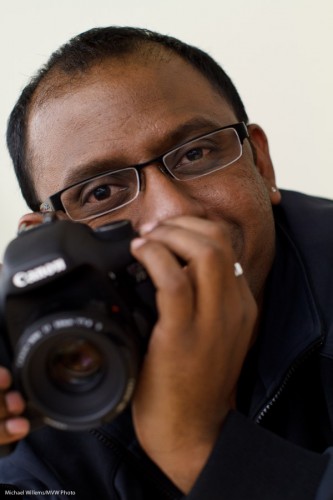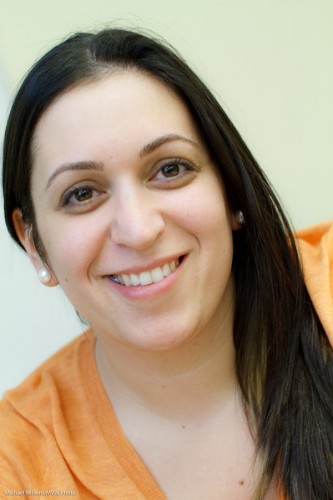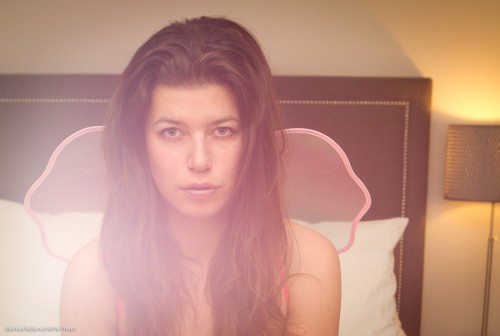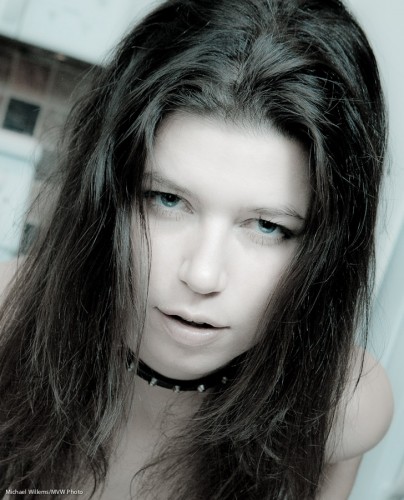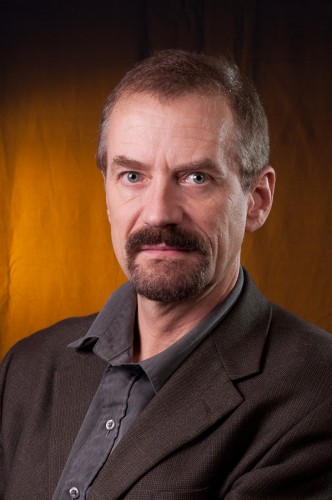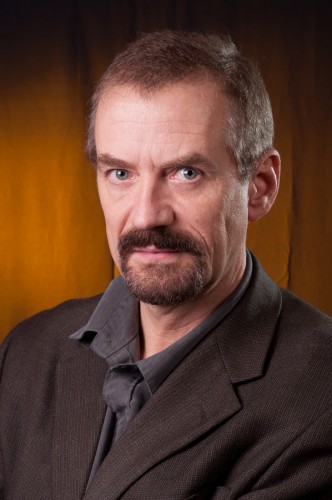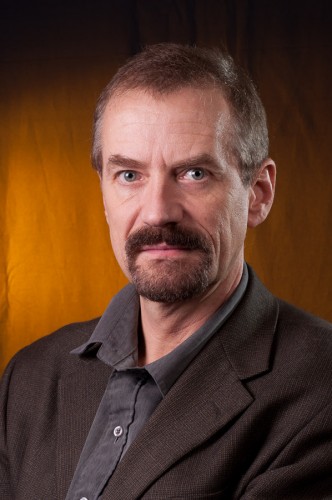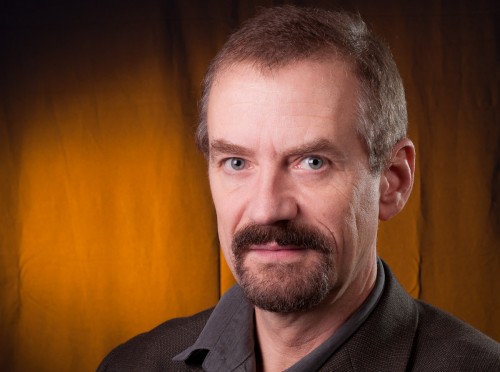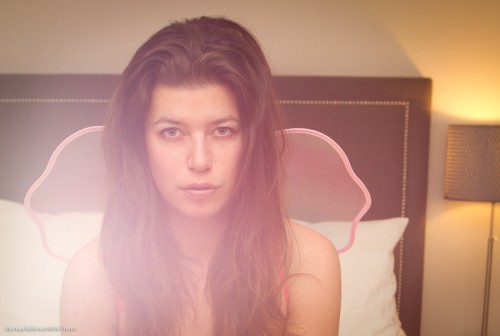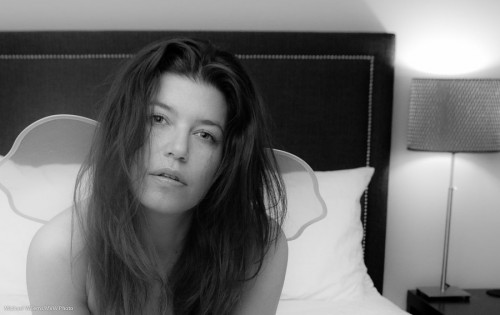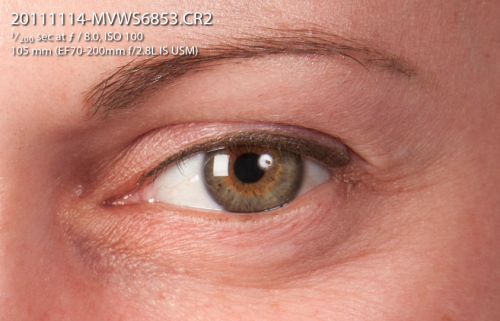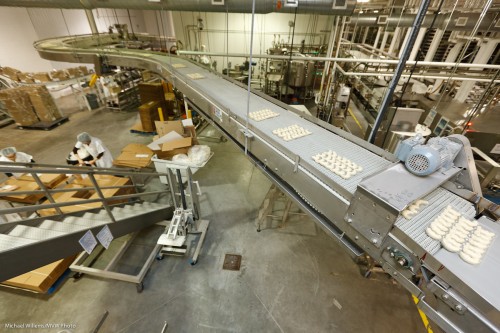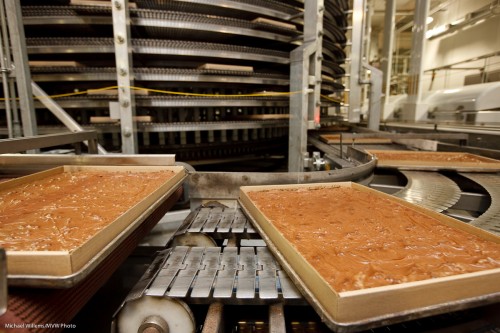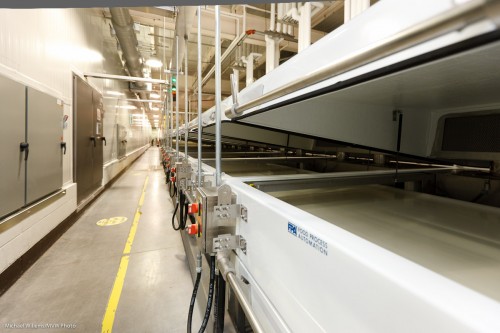Your camera’s light meter is a reflected light meter.
Here’s how it works. And you need to simply accept and remember the following:
The in-camera light meter is designed to give a good reading when aimed at a mid-gray (“18% grey”) subject.
By implication, this means that when you aim at a non-midtone subject (like a dark subject or a light subject) the image will be incorrectly exposed.
In other words, because the camera “thinks” that it is looking at mid-grey it will try to render the subject as mid-grey.
One solution is to set your exposure manually while looking at a grey card; then using that exposure for your subsequent pictures taken in that light. That way I get pictures that are right regardless of the subject’s brightness.
Like these two taken at yesterday’s Sheridan College class, of two of my students:
[1] Darker subject, coat, camera:
[2] NBow a lighter subject, dress, wall:
Both were correct at the metered settings of 1/125th second, f/2.8, at 800 ISO. Which I measured off a gray card!

